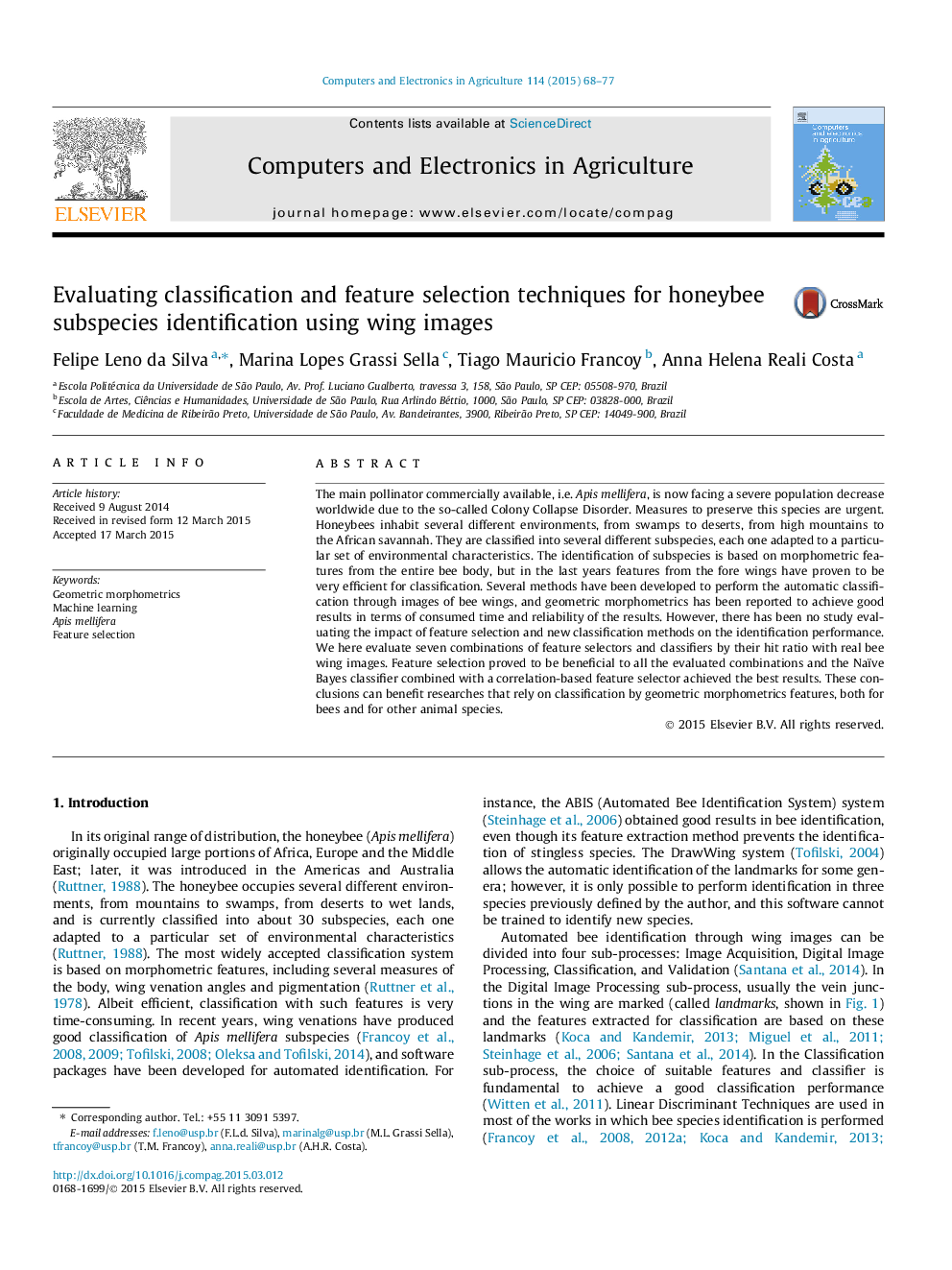| Article ID | Journal | Published Year | Pages | File Type |
|---|---|---|---|---|
| 6540695 | Computers and Electronics in Agriculture | 2015 | 10 Pages |
Abstract
The main pollinator commercially available, i.e. Apis mellifera, is now facing a severe population decrease worldwide due to the so-called Colony Collapse Disorder. Measures to preserve this species are urgent. Honeybees inhabit several different environments, from swamps to deserts, from high mountains to the African savannah. They are classified into several different subspecies, each one adapted to a particular set of environmental characteristics. The identification of subspecies is based on morphometric features from the entire bee body, but in the last years features from the fore wings have proven to be very efficient for classification. Several methods have been developed to perform the automatic classification through images of bee wings, and geometric morphometrics has been reported to achieve good results in terms of consumed time and reliability of the results. However, there has been no study evaluating the impact of feature selection and new classification methods on the identification performance. We here evaluate seven combinations of feature selectors and classifiers by their hit ratio with real bee wing images. Feature selection proved to be beneficial to all the evaluated combinations and the Naïve Bayes classifier combined with a correlation-based feature selector achieved the best results. These conclusions can benefit researches that rely on classification by geometric morphometrics features, both for bees and for other animal species.
Related Topics
Physical Sciences and Engineering
Computer Science
Computer Science Applications
Authors
Felipe Leno da Silva, Marina Lopes Grassi Sella, Tiago Mauricio Francoy, Anna Helena Reali Costa,
